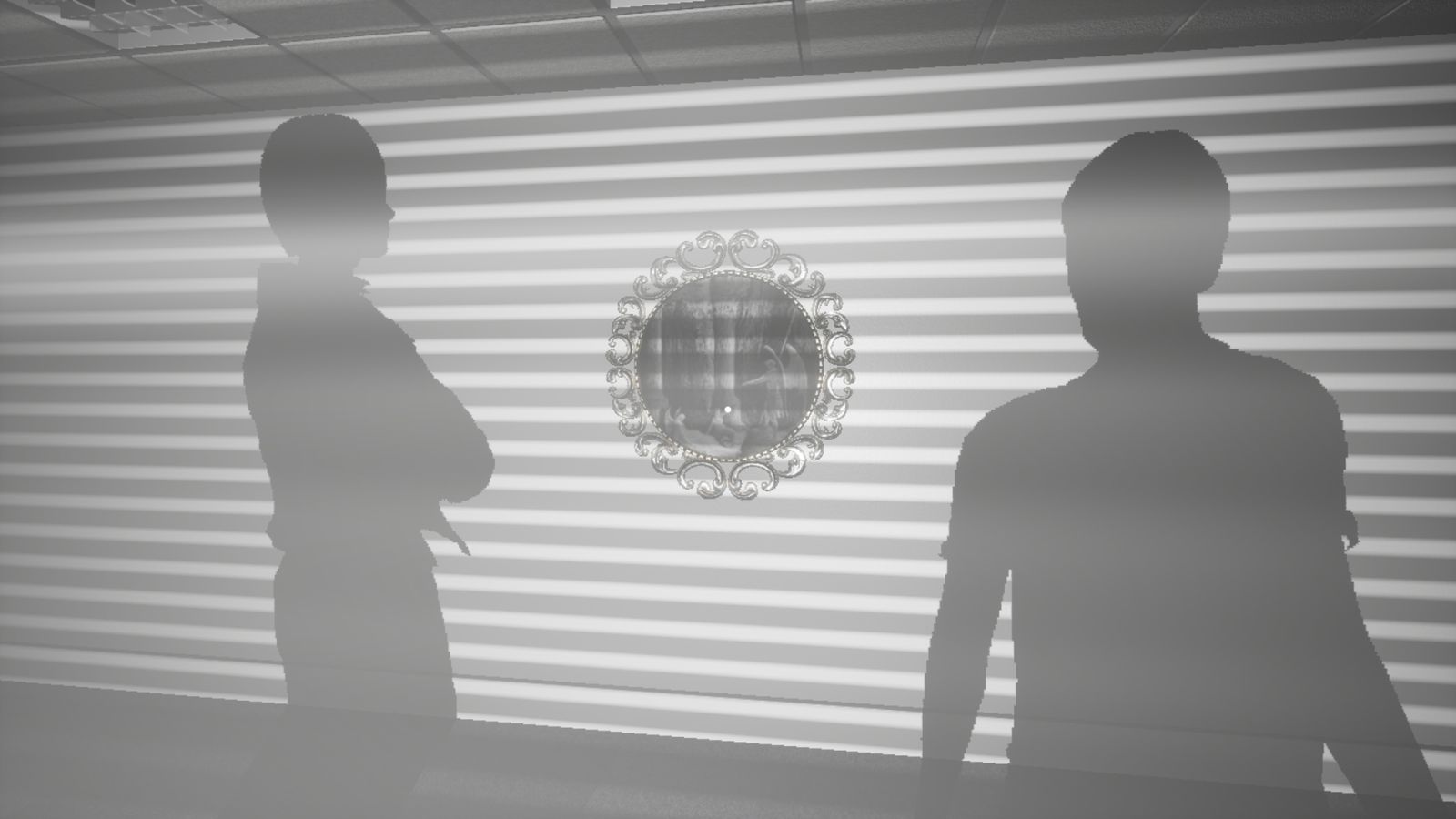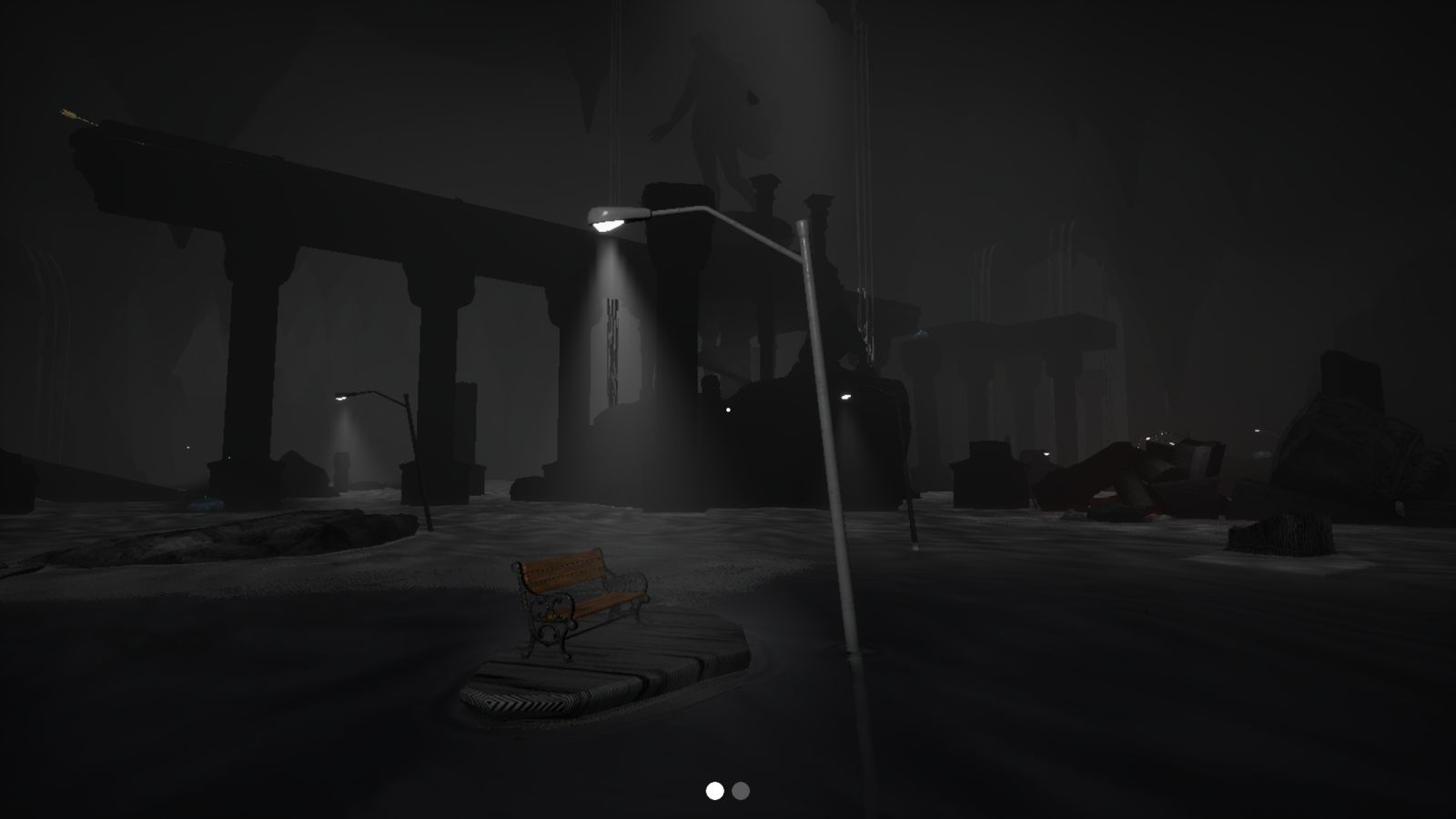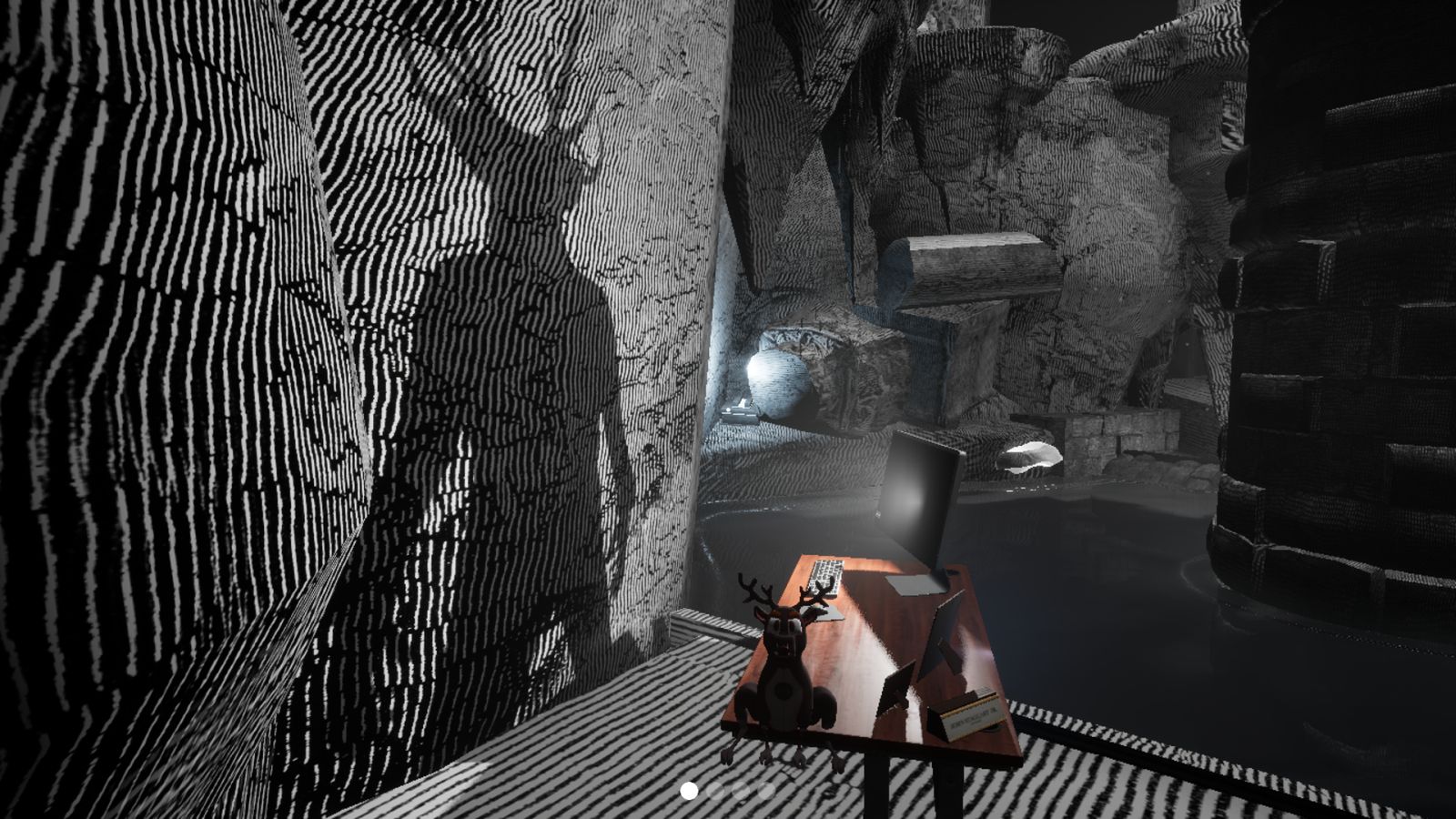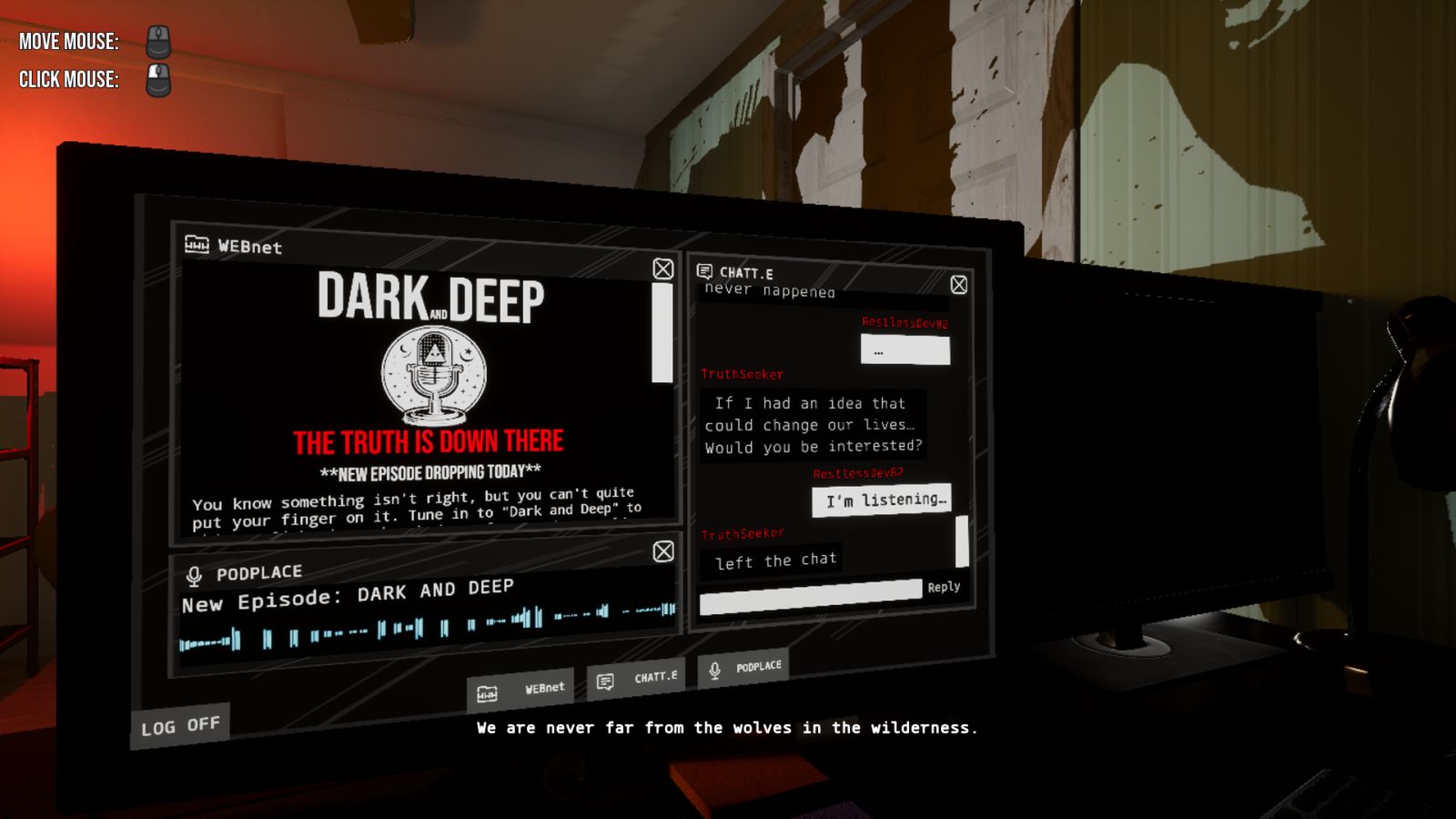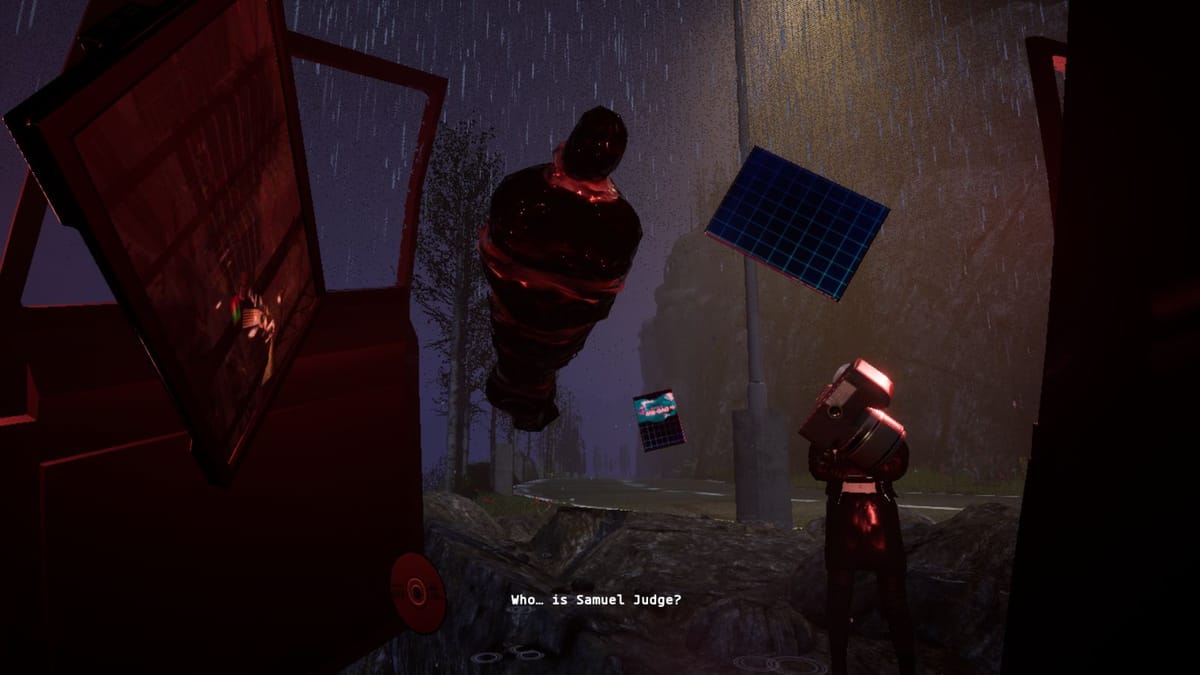
When I first opened Dark and Deep, I was expecting a spooky little ride with a few jump scares, some music stings, and maybe even a plot twist. What I was not expecting was a mind-melting adventure through a sinner’s psyche as I questioned if the world around me was even real, all of which is wrapped up in layers of Biblical canon, 19th-century art, and Hellenistic themes.
I would love to start this review off by introducing the main character, but that itself is the biggest question of the game. We know his name, Samuel Judge. We know his lot in life, a man who graduated top of his class who still lives with his mother and works a job he hates. A man who listens to a sub-par conspiracy theory podcast for his entertainment. A man whose best friend, whose only friend, is a stranger online. And yet, that question still burns throughout the entire game—who is Samuel Judge?
While you’re trying to figure out who Samuel Judge is or isn’t, you’re making your way through a twisted underworld. Let’s start at the beginning. A van, a body, a podcast, and a woman. The latter stares down as the rest are cast into the deep. We wake up in a hallway adorned with three of the works of Gustav Dore, a 19th-century painter known for his renderings of Dante’s Inferno, Paradise Lost, and more. At the end, we come to the mouth of a cave with a pit. The shadow of a winged figure looms beneath a well-decorated picture frame, upon picking it up and looking through it, a woman is revealed.
As you view her, the reticle of your screen forms an eye that slowly opens while a bubbly ascending tone is played. Visually, think of the reticle like a reverse version of the opening eye in Skyrim’s stealth system. When fully opened she pops into the world before you. Flipping the frame around, you get a cryptic message from her. It’s not until we move further along in the cave that you use the frame to reveal a sketch from the woman’s perspective, signed with her name; Dora.
It’s also here where we’re introduced to something else you can view through your frame, an ember pool. These pools grant you small blue orbs called embers which are used to progress in the game’s numerous puzzles. Beware, as there are creatures called crawlers and drowners, denizens of this twisted domain, that actively seek to take your embers, thus harming your progress.
This is a stellar opening. It’s not only a killer hook, but also a perfect introduction to the themes and systems of Dark and Deep while giving them plenty of room to grow naturally. Who is Dora? Why am I here? What are these creatures and why do they want the embers? The answers to these questions aren’t so clean cut, and that’s what I love about this game. If you put in the effort, you might just be able to get a glimpse of the truth.
Moving on to the aforementioned puzzles. Most puzzles consist of finding an ember and then casting it forward into a gravity machine. These machines levitate or move objects nearby to form a pathway or bridge for the player to get to the next location. The problem is, the creatures that hunt down embers don’t stop just because they’re in a gravity machine. They’ll try to pry the embers out. This is where the frame system comes into play; point the frame at an enemy for a bit, and watch them ragdoll away like a loose balloon.
The frame system adds levels of engagement to the largely story-focused game without becoming overbearing. As the game progresses, you find more frames for different enemy types, but the general frame mechanic remains the same. Given that you can’t see enemies until you find them with the frame, there are some great moments where you hear a growl coming from the general vicinity and start frantically looking for the enemy before it can steal the ember out of the gravity machine that’s powering the makeshift bridge you’re walking over. There are a few times throughout the game where you have to juggle between frames to deal with multiple threats. Other times, the monstrosity you’re facing is too big to fit in the frame, making gazing upon it through a lens cumbersome in a way that enhances the tension. The game does an excellent job of playing with its frame system and puzzles to keep things fresh.
I previously mentioned Gustav Dore’s works being featured on the walls in the game. What I didn’t mention is that in many sections, his works are the walls of the game. Walter Woods, the solo developer behind Dark and Deep, went out of his way to bring Dore’s art to life, using the pieces as textures. There’s a lot of symbolic meaning to be analyzed and discovered if you’re willing to look. Beyond that, the bold black and white streaks add a surreal feeling to the adventure, especially when contrasted with the more mundane, everyday locations of the game. The monochrome scheme also serves to highlight the rare splashes of color, forcing the player to acknowledge their significance. My only gripe with the graphics is that some of the character models are a little rough, but it didn’t subtract from the experience in any meaningful way for me personally.
The only bug that impacted my gameplay experience was a one-in-a-million one-two punch. First, an ember failed to spawn, soft-locking me, so when I killed myself by jumping off a ledge to reload to the last checkpoint, I accidentally skipped forward about 20 minutes of gameplay. I progressed from that point on, but I could have just used the level select to get back to where I was rather effortlessly. The game’s sections are divided into short portions in the level selection, which makes it a valuable tool for going back and looking for more clues about the plot.
On the note of audio, the game makes liberal use of horror stings to emphasize when the player should be paying attention. It’s more of a highlight than a jump scare, and I appreciate it. I especially like how the game draws attention to enemies. Crawlers make rapid panting and growling sounds that are not easy to pinpoint and when they lunge at you, a violin pluck is played. There’s not a lot of music in Dark and Deep, but it’s used effectively when played. The recurring podcast that the game is named after, Dark and Deep, plays a twangy theme song that sounds like it could fit perfectly in shows like The X Files. The theme often bleeds over into action scenes in a brilliant diegetic switch.
The gameplay, the art, and the soundtrack are all robust pillars that hold up a rich story. This isn’t a straightforward tale; it’s a deep, interconnected narrative that builds upon the stories of multiple, timeless mythologies. The layers of the story overlap and intertwine, leading to some great theory-crafting opportunities. If you’re the type of player who yearns to dig for the information that lies beneath the surface, then this game is a must-play. The game does all of this without coming off as pretentious, and it’s quite self-aware. The in-game podcaster who produces Dark and Deep is a bit of a huckster, and he’ll effortlessly switch gears from talking about a hidden plot to undermine the free will of the masses, to shilling the razor company that sponsors him.
If I’m being honest, given the short five-ish hour runtime, I went into Dark and Deep expecting to be able to write out the review in a day. My sin there was hubris. By the end, I had pages and pages of notes on Gustav Dore’s paintings, how different characters relate to each other, and I had glitched out of the map multiple times in order to find every last drop of evidence (I went a little overboard with that last one). I had a little over 27 hours in the game by the end, so don’t assume that the five-hour run time is where it ends. In fact, with all of the theory crafting you’ll be doing, the end is just the beginning. This game is a complicated tea that you’ll want to steep multiple times to reveal all of the stunning notes.
Dark and Deep
Excellent
Dark and Deep is a horror game that lives up to its name, covering some pretty macabre themes and allowing the player to dive deep into the investigation. There are layers upon layers to the game’s art, sound, and gameplay, and they all tie into each other in brilliant ways.
Pros
- Deep, rich story to sink your teeth into
- Amazing translation and adaptation of Dore’s work
- Puzzles are constantly changing to keep things fresh
Cons
- Some bugs
- Character models look a little janky

